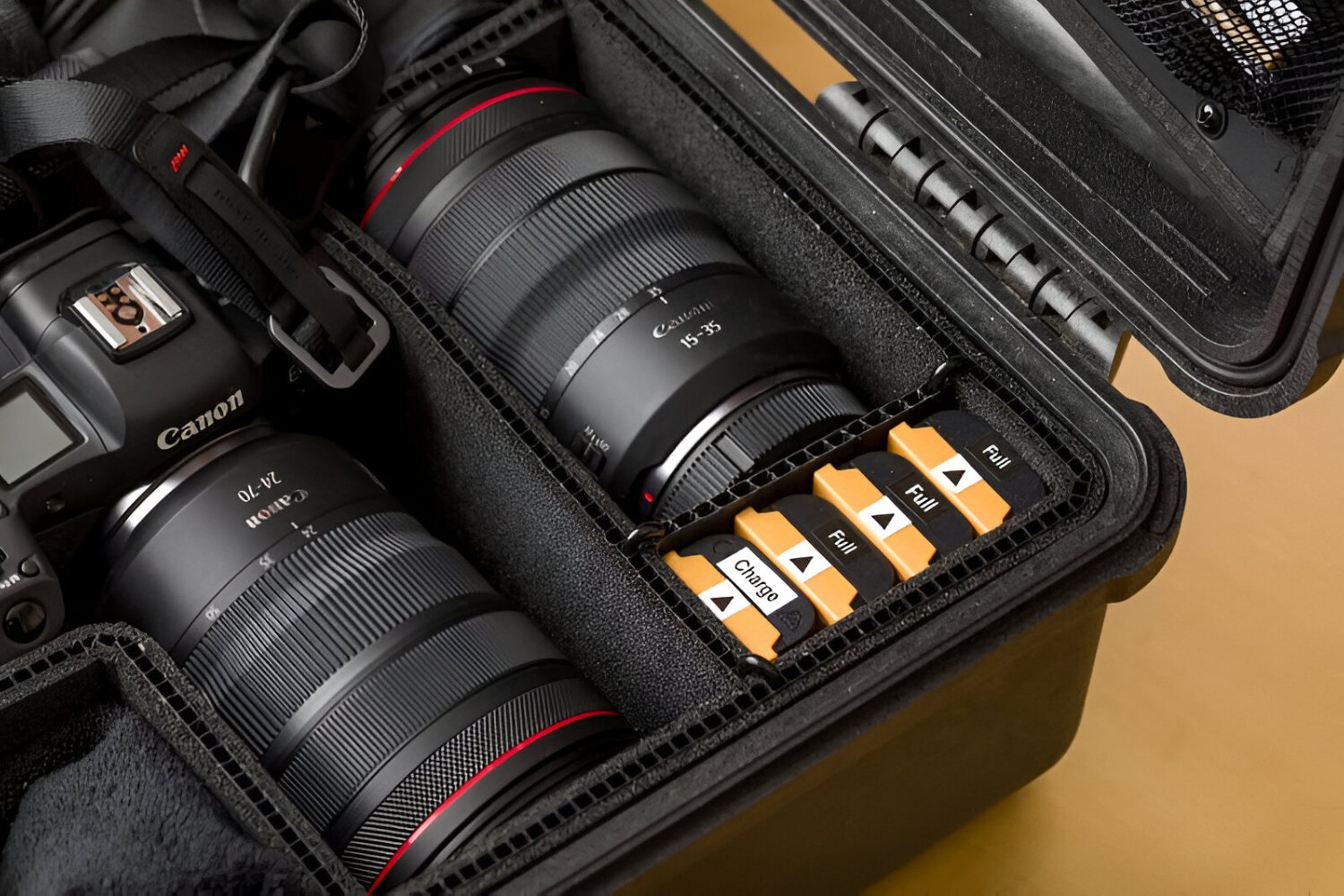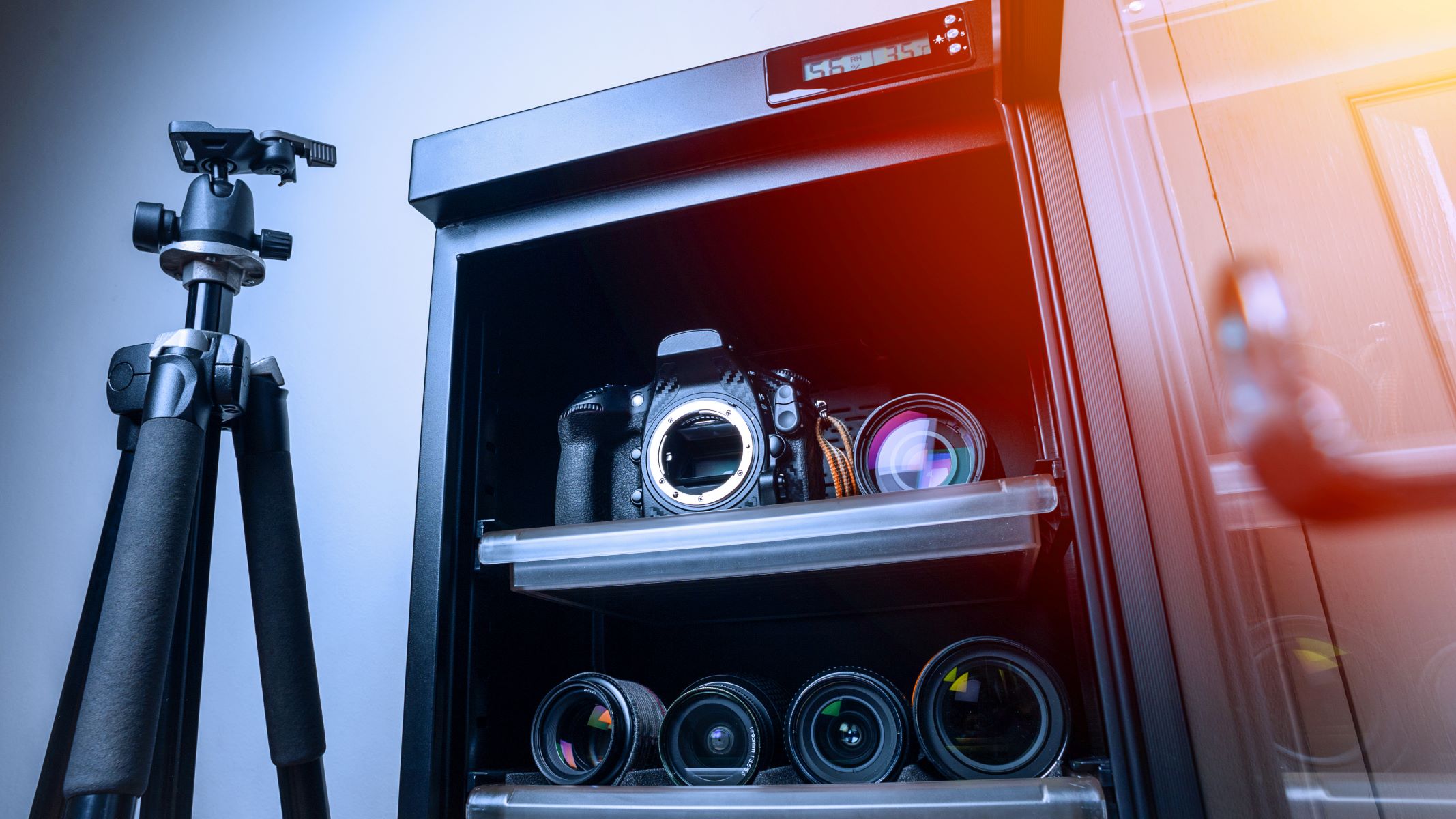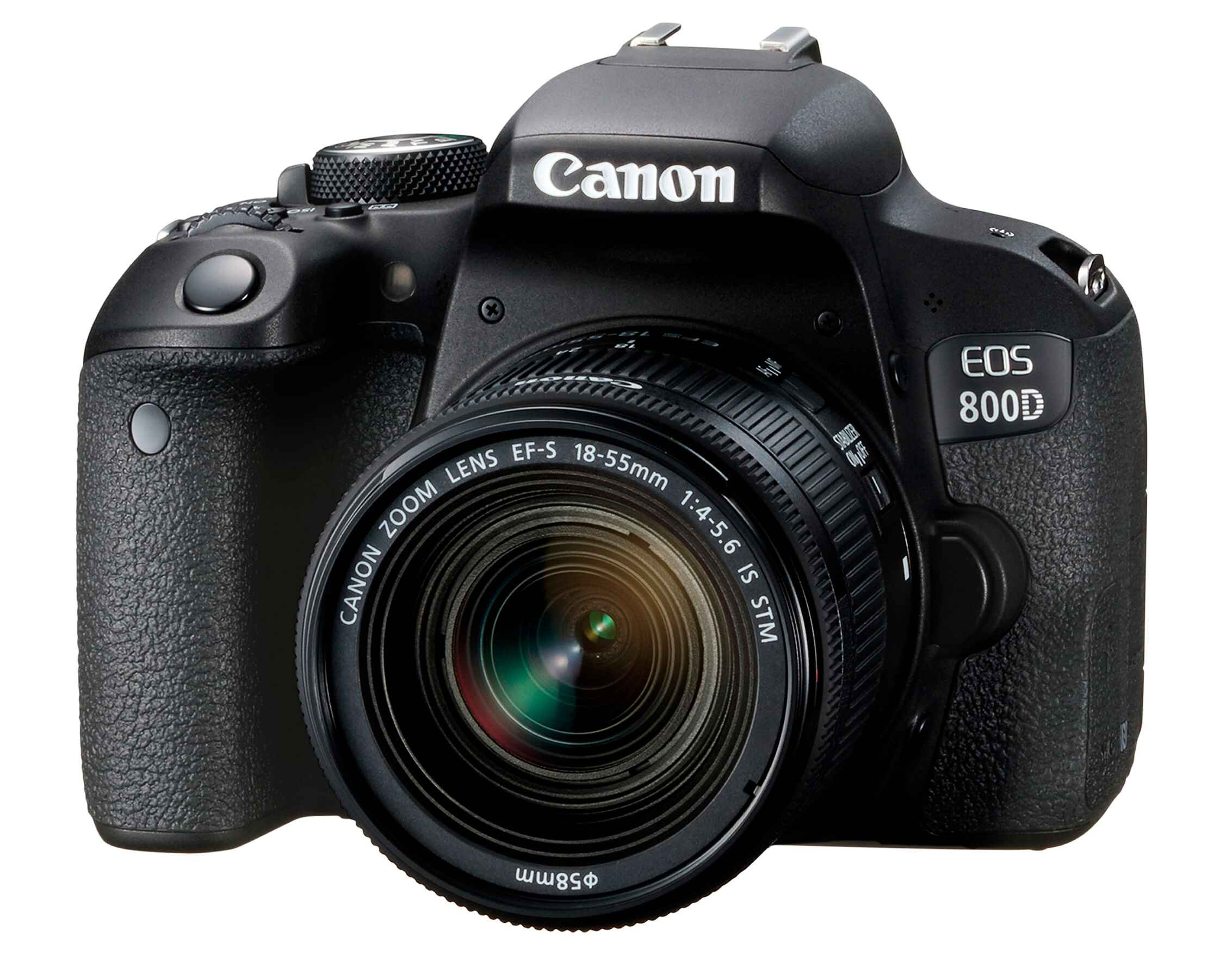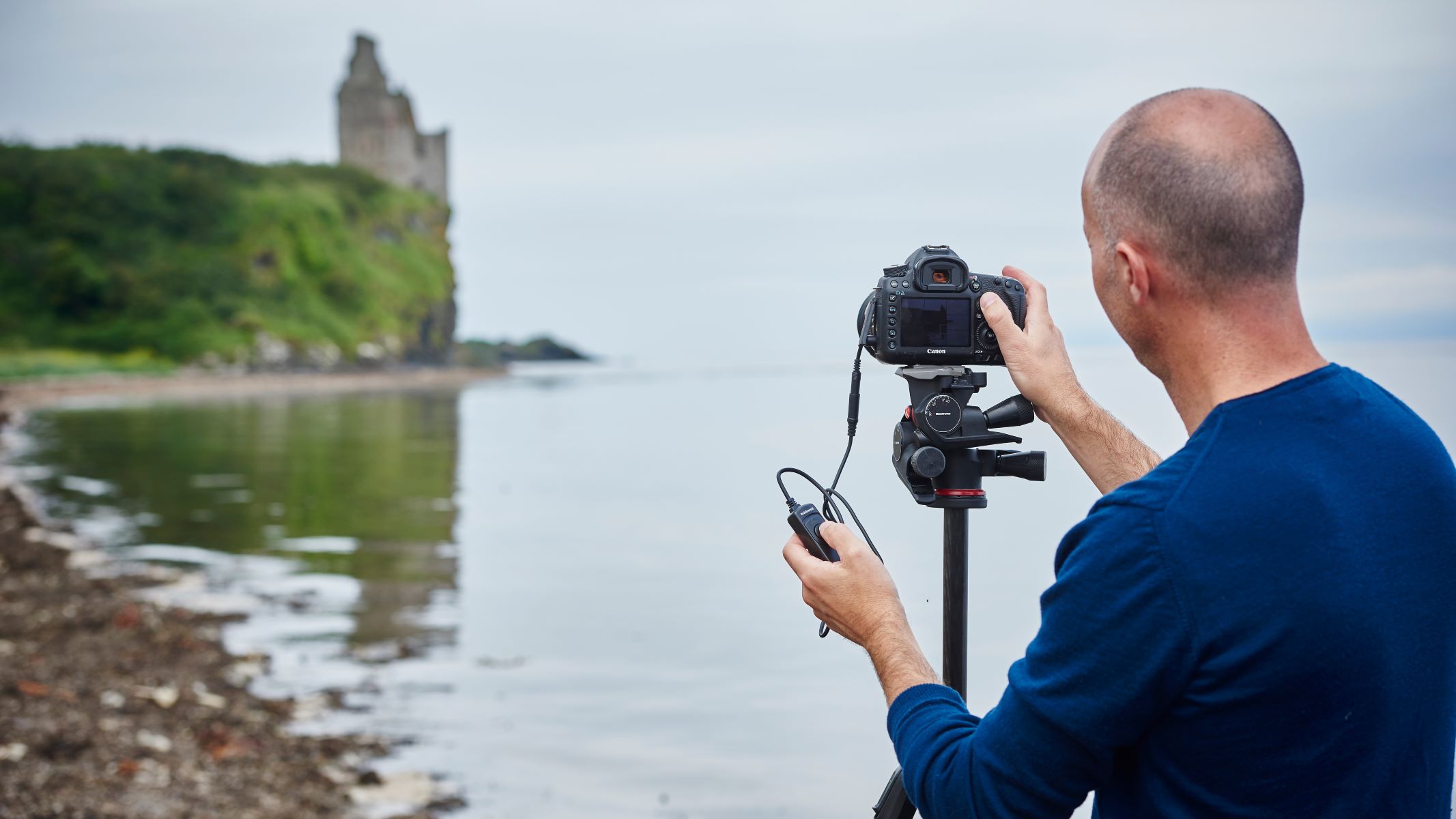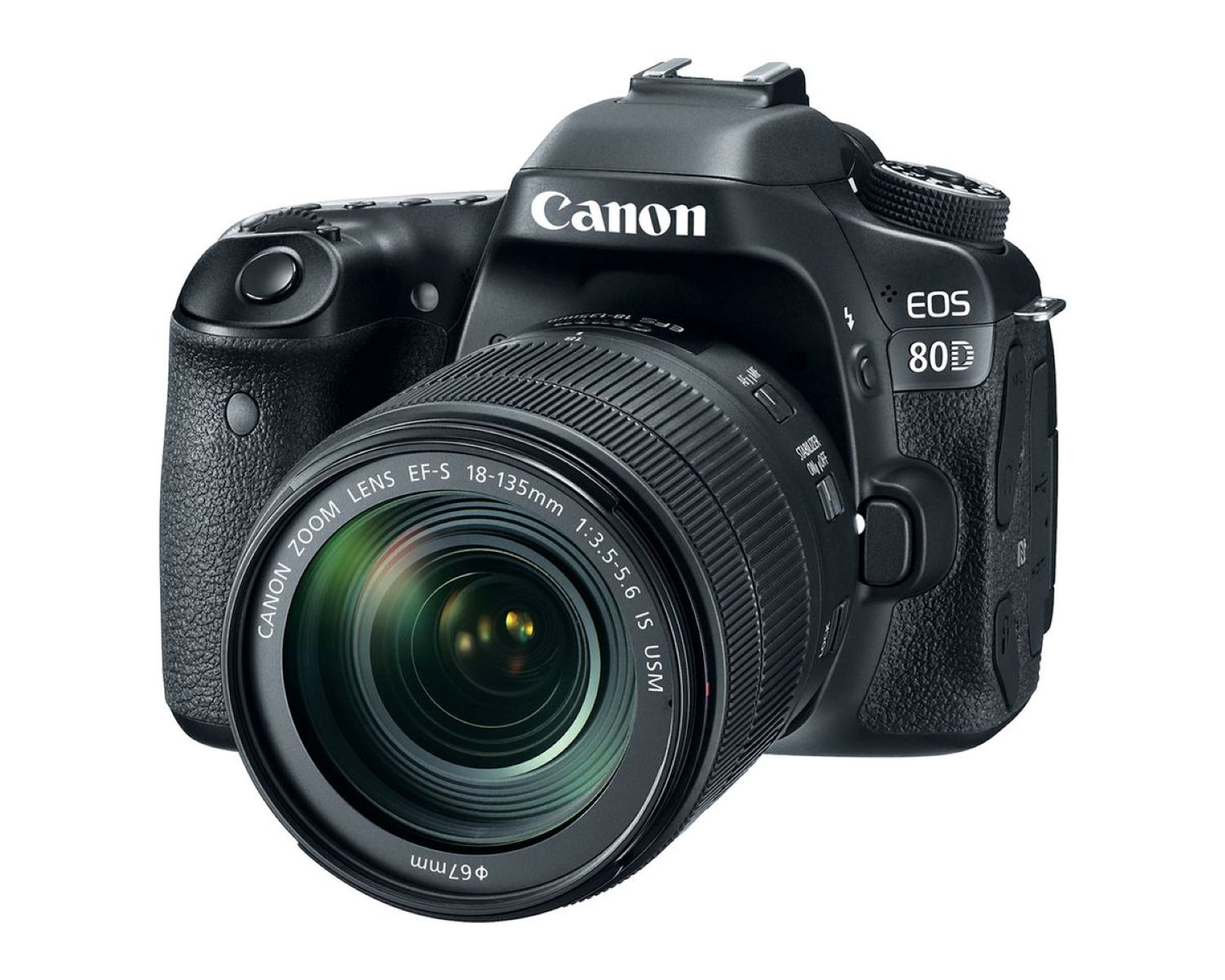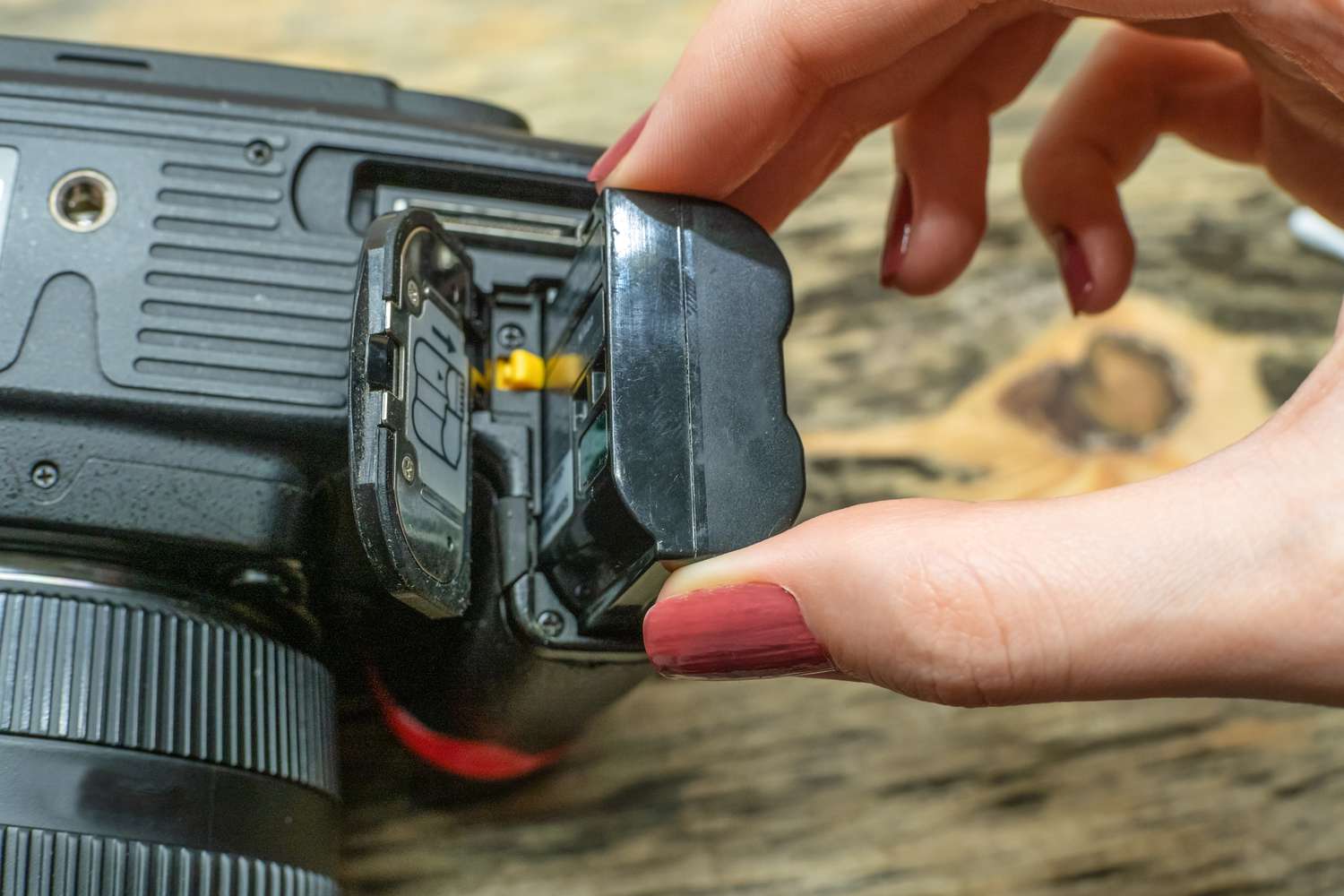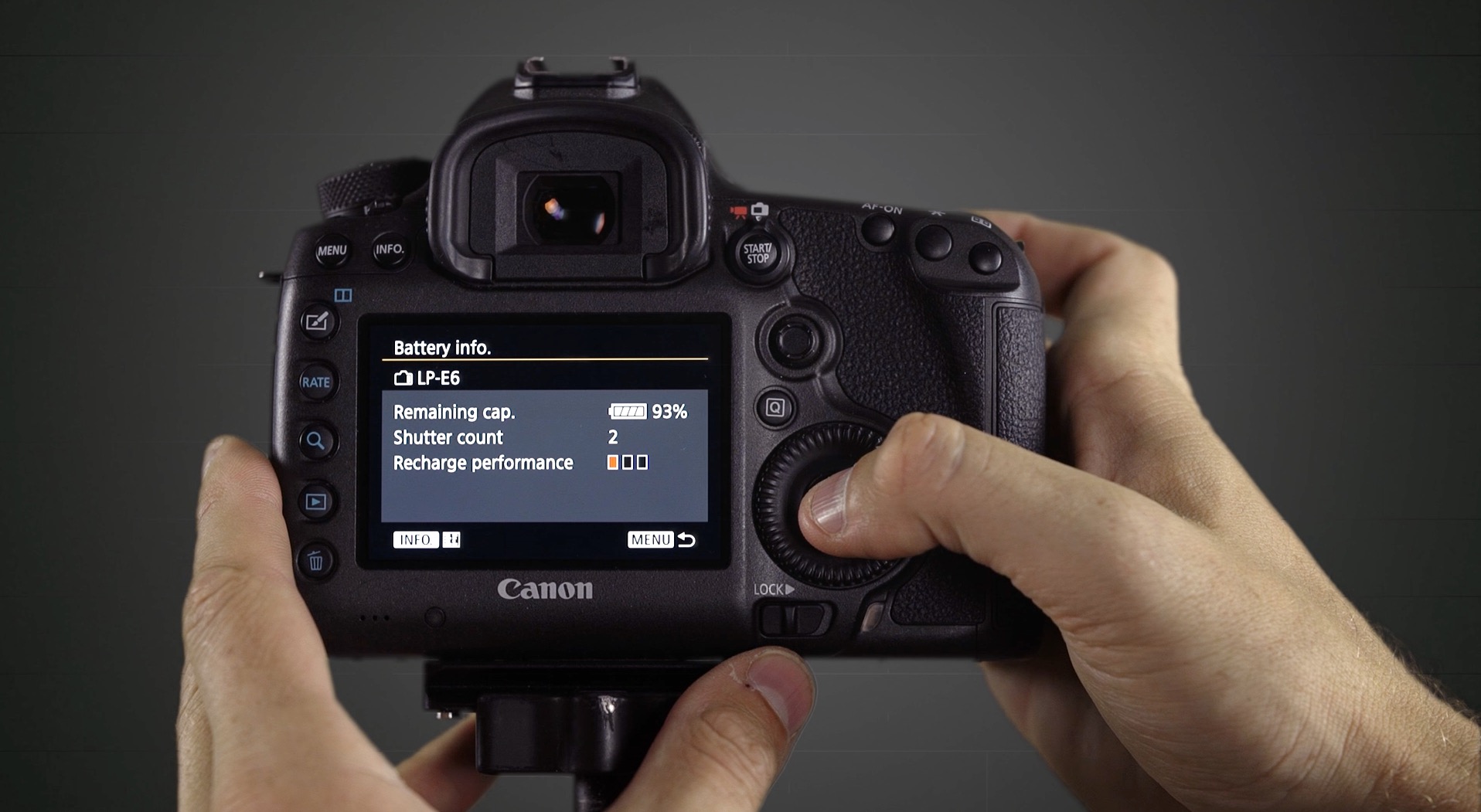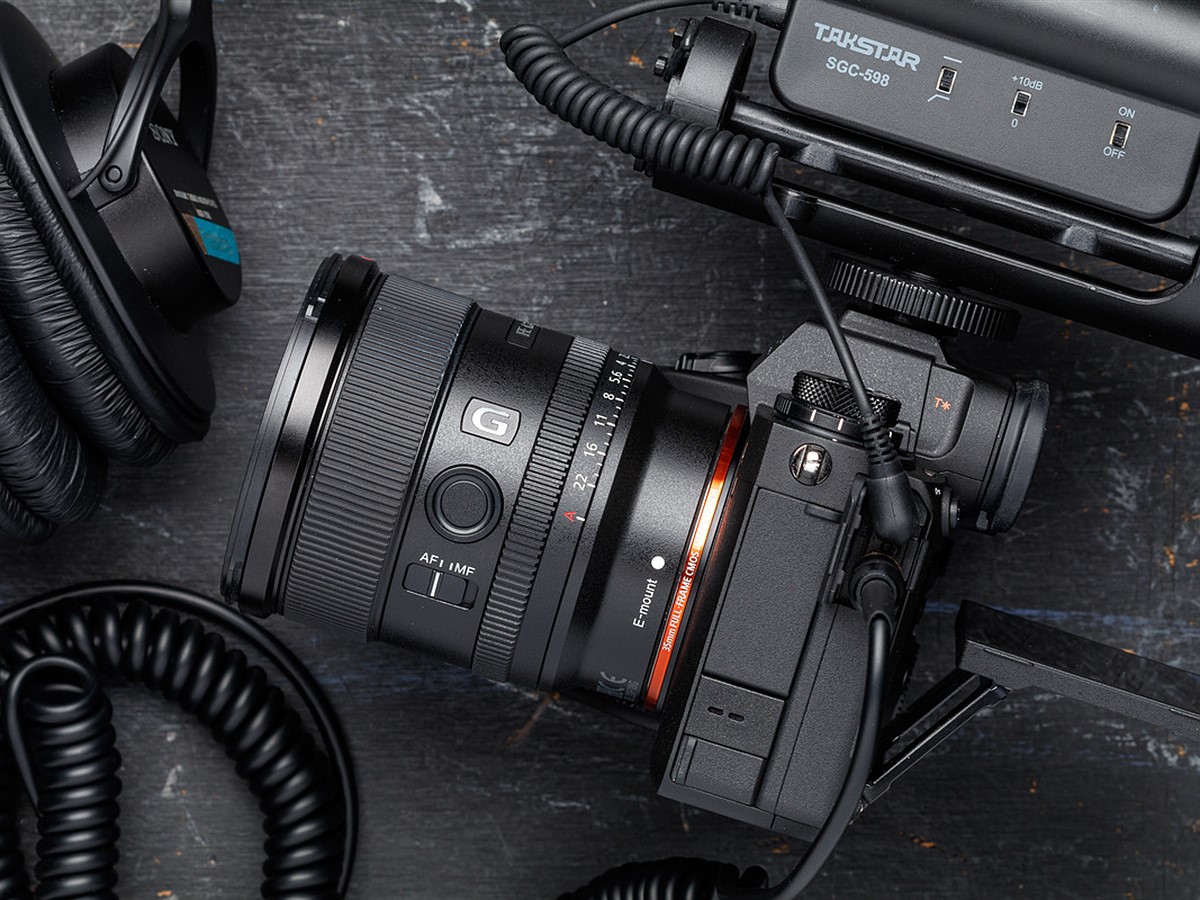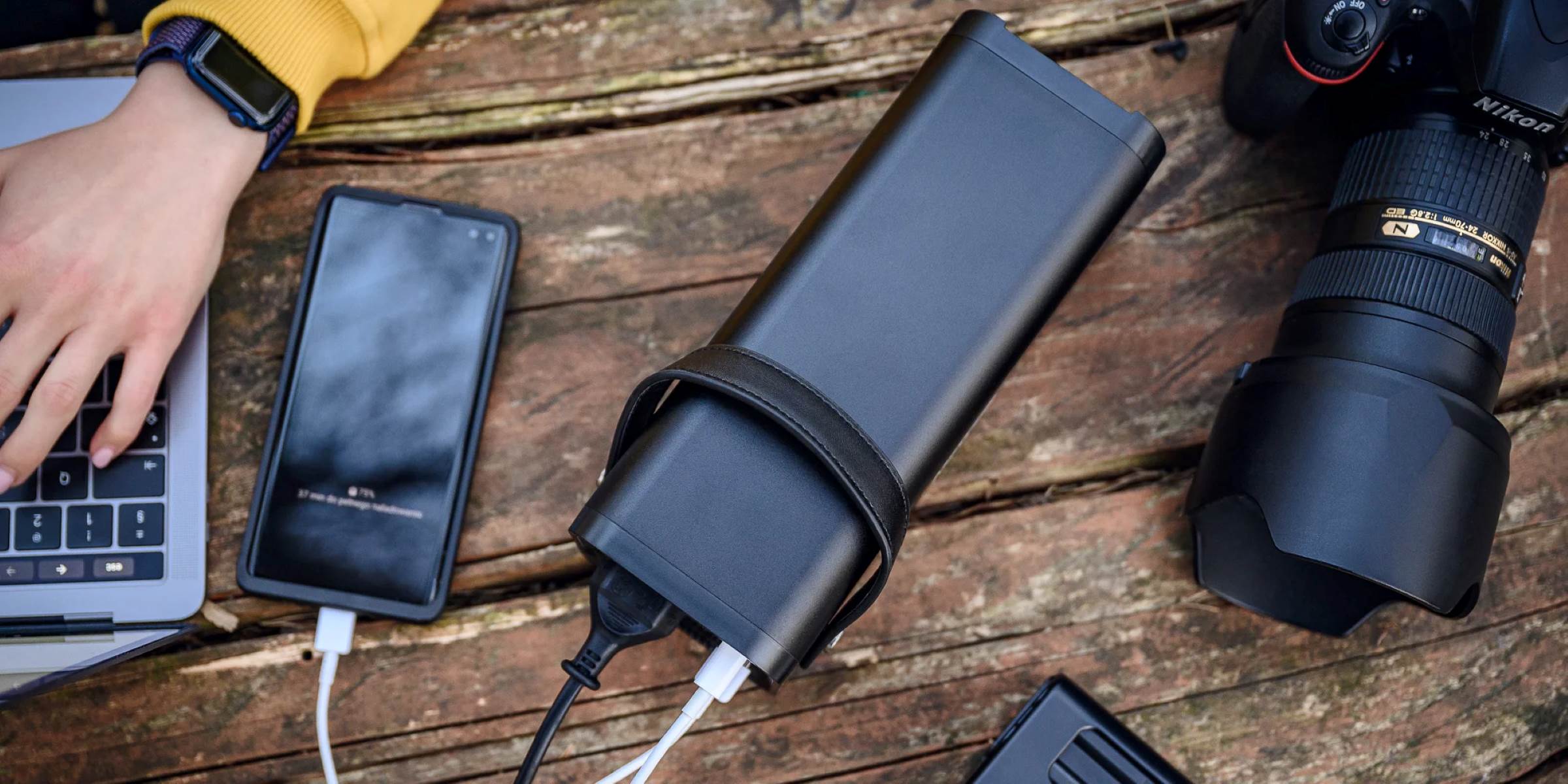Introduction
Owning a DSLR camera is a thrilling experience, allowing you to capture stunning images with precision and clarity. However, the performance of your DSLR camera is heavily reliant on the condition of its battery. To ensure that your camera is always ready to capture those perfect moments, it's essential to understand how to maintain and prolong the lifespan of your DSLR camera battery.
A DSLR camera battery is the powerhouse that fuels your photographic adventures, and without it, your camera is rendered useless. Therefore, it's crucial to implement effective maintenance practices to keep your battery performing at its best. By following some simple yet impactful tips, you can optimize the longevity and efficiency of your DSLR camera battery, allowing you to focus on your photography without worrying about sudden power drainage or battery failure.
In this comprehensive guide, we will explore various strategies and techniques to help you maintain your DSLR camera battery. From choosing the right battery to utilizing power-saving modes and carrying spare batteries, each aspect is designed to empower you with the knowledge and tools to maximize the performance and lifespan of your DSLR camera battery. So, let's delve into the world of DSLR camera battery maintenance and ensure that you're always equipped to capture life's most precious moments.
Use the Right Battery
Choosing the right battery for your DSLR camera is the first step in ensuring optimal performance and longevity. It is essential to use a battery that is specifically designed for your camera model, as using incompatible or counterfeit batteries can not only lead to poor performance but also pose safety risks. Genuine, manufacturer-recommended batteries are engineered to meet the power requirements and safety standards of your DSLR camera, providing peace of mind and reliable operation.
When selecting a battery for your DSLR camera, it’s important to consider its capacity, voltage, and compatibility with your camera model. Higher capacity batteries can provide extended shooting time, which is particularly beneficial for prolonged photography sessions or when capturing video footage. Additionally, ensuring that the battery voltage matches the specifications outlined by the camera manufacturer is crucial to prevent potential damage to the camera’s internal components.
Furthermore, it’s advisable to purchase batteries from reputable sources, such as authorized dealers or the camera manufacturer’s official outlets. This helps in guaranteeing the authenticity and quality of the battery, reducing the likelihood of encountering issues related to performance or safety. While third-party batteries may seem like a cost-effective alternative, they often lack the stringent quality control measures implemented by genuine manufacturers, potentially leading to subpar performance and compatibility issues.
By using the right battery for your DSLR camera, you can optimize its performance, minimize the risk of malfunctions, and ensure a seamless photography experience. Investing in genuine, high-quality batteries tailored to your specific camera model is a proactive step towards safeguarding the longevity and reliability of your DSLR camera’s power source.
Turn Off the Camera When Not in Use
One of the simplest yet often overlooked practices for preserving DSLR camera battery life is to turn off the camera when it is not in use. While it may seem obvious, leaving the camera powered on, even in standby mode, can gradually deplete the battery’s charge. By developing the habit of switching off the camera when it’s not actively being used, you can significantly extend the battery’s longevity and minimize unnecessary power consumption.
Additionally, many modern DSLR cameras are equipped with an auto-power off feature, allowing users to set a specific duration after which the camera automatically powers down to conserve battery life. Leveraging this feature can be particularly beneficial in situations where you may inadvertently forget to turn off the camera, providing an extra layer of protection against unnecessary power drainage.
Furthermore, when transporting your camera or storing it for an extended period, ensuring that it is powered off can prevent accidental activation and subsequent battery drain. This practice not only preserves the battery’s charge but also reduces the likelihood of encountering unexpected power issues when you’re ready to capture moments with your DSLR camera.
By incorporating the habit of turning off your DSLR camera when it’s not actively in use, you can effectively prolong the battery’s lifespan, optimize its performance, and minimize energy wastage. This simple yet impactful practice forms an integral part of responsible battery management, ensuring that your camera is always ready to spring to life when the perfect shot presents itself.
Avoid Extreme Temperatures
Temperature plays a significant role in the performance and overall lifespan of DSLR camera batteries. Exposure to extreme heat or cold can have detrimental effects on the battery’s efficiency and long-term viability. Therefore, it’s crucial to be mindful of environmental conditions and take proactive measures to shield the battery from temperature extremes, safeguarding its functionality and longevity.
High temperatures can accelerate the rate of chemical reactions within the battery, leading to increased self-discharge and reduced overall capacity. Prolonged exposure to heat can also contribute to premature aging of the battery, diminishing its ability to hold a charge effectively. To mitigate these effects, it’s advisable to store DSLR camera batteries in a cool, dry environment, away from direct sunlight and sources of heat, such as radiators or hot vehicle interiors.
Conversely, extreme cold can also impede the performance of DSLR camera batteries. Low temperatures can cause the battery’s internal resistance to rise, limiting its ability to deliver power efficiently. In frigid conditions, the capacity of the battery may appear to diminish, leading to shorter operating times and potential operational issues. When shooting in cold environments, it’s beneficial to carry spare batteries and keep them insulated to maintain their optimal performance.
By being mindful of temperature considerations and taking proactive steps to shield DSLR camera batteries from extreme heat or cold, you can preserve their functionality and maximize their lifespan. Storing batteries in a moderate, controlled environment and avoiding prolonged exposure to temperature extremes is essential in ensuring that your DSLR camera is always powered and ready to capture those memorable moments.
Keep the Battery Contacts Clean
The proper maintenance of DSLR camera batteries extends beyond their physical storage and usage. Ensuring that the battery contacts, as well as the corresponding contacts within the camera, remain clean and free from debris or corrosion is vital for sustaining optimal performance and reliability. The battery contacts serve as the interface between the battery and the camera, facilitating the transfer of power, and any impediments to this connection can lead to diminished performance and potential malfunctions.
Over time, the battery contacts may accumulate dirt, dust, or oxidation, hindering the efficient transmission of power between the battery and the camera. To address this, it’s recommended to periodically inspect the battery contacts for any signs of contamination or corrosion. Using a clean, dry cloth or a specialized contact cleaning tool, gently remove any foreign particles or residue from the battery contacts, ensuring that they remain free from obstruction.
Similarly, it’s beneficial to inspect the corresponding contacts within the camera body, as these also play a crucial role in establishing a reliable connection with the battery. By maintaining clean and unobstructed contacts within the camera, you can optimize the electrical interface, minimize the risk of power interruptions, and promote overall system integrity.
Additionally, when not in use, storing the battery in a protective case or container can shield the contacts from environmental contaminants, preserving their cleanliness and ensuring a reliable connection when the battery is inserted into the camera. This simple preventative measure can contribute to the sustained performance and longevity of the battery, mitigating the risk of connectivity issues and potential power fluctuations.
By consistently keeping the battery contacts clean and free from obstructions, you can uphold the efficiency and reliability of your DSLR camera’s power source. This proactive approach to maintenance not only enhances the overall performance of the battery but also reduces the likelihood of encountering connectivity-related issues, allowing you to focus on capturing unforgettable moments with confidence and ease.
Use a Battery Grip
Integrating a battery grip into your DSLR camera setup can offer a multitude of advantages, particularly in terms of extending the operational lifespan and enhancing the convenience of battery management. A battery grip, also known as a vertical grip, serves as an ergonomic extension to the camera, providing additional space for accommodating extra batteries, thereby prolonging the shooting duration and minimizing the need for frequent battery replacements.
By attaching a battery grip to your DSLR camera, you not only increase its overall power capacity but also improve its handling and stability, especially when shooting in a vertical orientation. This ergonomic enhancement is particularly beneficial for portrait photography or situations where a vertical composition is desired, offering a more comfortable and balanced grip while simultaneously extending the available power supply.
Furthermore, battery grips often feature intuitive controls and buttons that mirror those found on the camera body, allowing for seamless operation and enhanced functionality. This streamlined integration ensures that the additional batteries housed within the grip can be seamlessly utilized, providing a continuous power source without interrupting the shooting process.
Moreover, the inclusion of a battery grip can contribute to a more balanced weight distribution, especially when using larger lenses or accessories, thereby reducing strain and fatigue during extended shooting sessions. This ergonomic advantage not only enhances the overall handling of the camera but also promotes a more comfortable and controlled shooting experience.
Incorporating a battery grip into your DSLR camera setup empowers you with extended shooting capabilities, enhanced handling, and seamless battery management. Whether capturing timeless moments during extended photo sessions or navigating challenging shooting environments, the addition of a battery grip can significantly augment the performance and versatility of your DSLR camera, providing the power and control needed to unleash your creative vision.
Use a Power Saving Mode
Many modern DSLR cameras are equipped with power-saving modes that offer efficient mechanisms to conserve battery life without compromising essential functionality. Activating the power-saving mode on your camera can significantly extend the operational duration of the battery, allowing you to capture more images and footage while minimizing unnecessary power consumption.
Power-saving modes typically encompass a range of features and settings designed to optimize energy usage without sacrificing critical camera operations. These may include automatic display dimming or shutdown, reduced auto-focus activity, and delayed power-off timing. By leveraging these built-in capabilities, you can effectively manage the power consumption of your DSLR camera, especially during periods of inactivity or when shooting in controlled environments.
Furthermore, adjusting the camera’s settings to optimize power utilization can contribute to a more efficient and sustainable shooting experience. This can involve customizing parameters such as auto-focus behavior, image review duration, and display brightness to strike a balance between operational requirements and power conservation. By tailoring these settings to align with your specific shooting conditions and preferences, you can maximize the efficiency of the battery while maintaining the necessary functionality for capturing exceptional images and videos.
Additionally, utilizing the power-saving mode can be particularly advantageous during extended shooting sessions or when operating in remote locations where access to power sources may be limited. By implementing these energy-conscious settings, you can prolong the operational lifespan of the battery, ensuring that you can continue capturing moments without the interruption of frequent battery changes or recharges.
By embracing the power-saving mode and customizing the energy-efficient settings of your DSLR camera, you can harness the full potential of your battery while optimizing its longevity. This proactive approach to power management not only enhances the sustainability of your photography endeavors but also empowers you to focus on your creative expression without the constraint of frequent battery concerns.
Carry a Spare Battery
Carrying a spare battery is a practical and proactive strategy to ensure uninterrupted shooting sessions and mitigate the risk of unexpectedly running out of power. Whether embarking on a full day of photography or traveling to remote locations, having an additional fully charged battery on hand provides a reliable backup, offering peace of mind and extended shooting capabilities.
When selecting a spare battery, it’s essential to opt for genuine, manufacturer-recommended batteries to guarantee compatibility and performance. Investing in high-quality spare batteries ensures that they seamlessly integrate with your DSLR camera, delivering consistent power output and minimizing the risk of operational issues or malfunctions.
Moreover, the convenience of a spare battery extends beyond simply prolonging the shooting duration. It serves as a safeguard against unexpected power depletion, allowing you to confidently explore diverse shooting opportunities and capture spontaneous moments without the constraint of limited battery life.
Carrying a spare battery is particularly beneficial during intensive photography sessions, events, or travel assignments where access to charging facilities may be limited. This preparedness empowers you to focus on your creative vision, knowing that you have a reliable power source readily available to support your photographic endeavors.
Furthermore, maintaining spare batteries in a charged state and periodically rotating their usage can help distribute the wear and tear across multiple batteries, prolonging their collective lifespan and optimizing their long-term performance. This proactive battery management approach ensures that each battery remains in optimal condition, ready to deliver consistent power when called upon.
By incorporating the practice of carrying a spare battery, you can enhance the resilience and flexibility of your photography pursuits, enabling you to capture captivating moments with confidence and continuity. This proactive measure not only mitigates the risk of unexpected power depletion but also empowers you to embrace diverse shooting opportunities, knowing that you have a reliable backup power source at your disposal.







